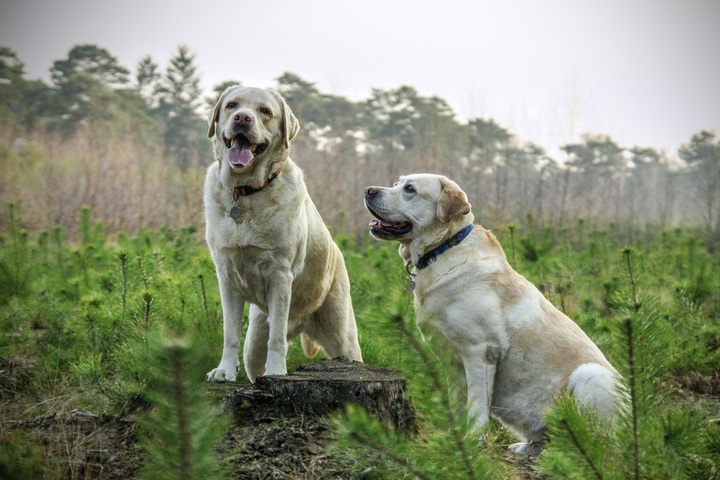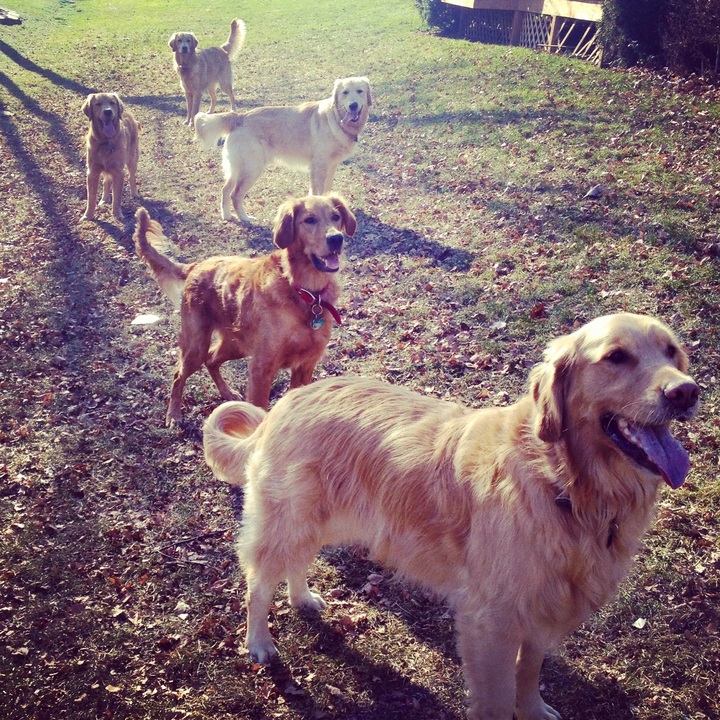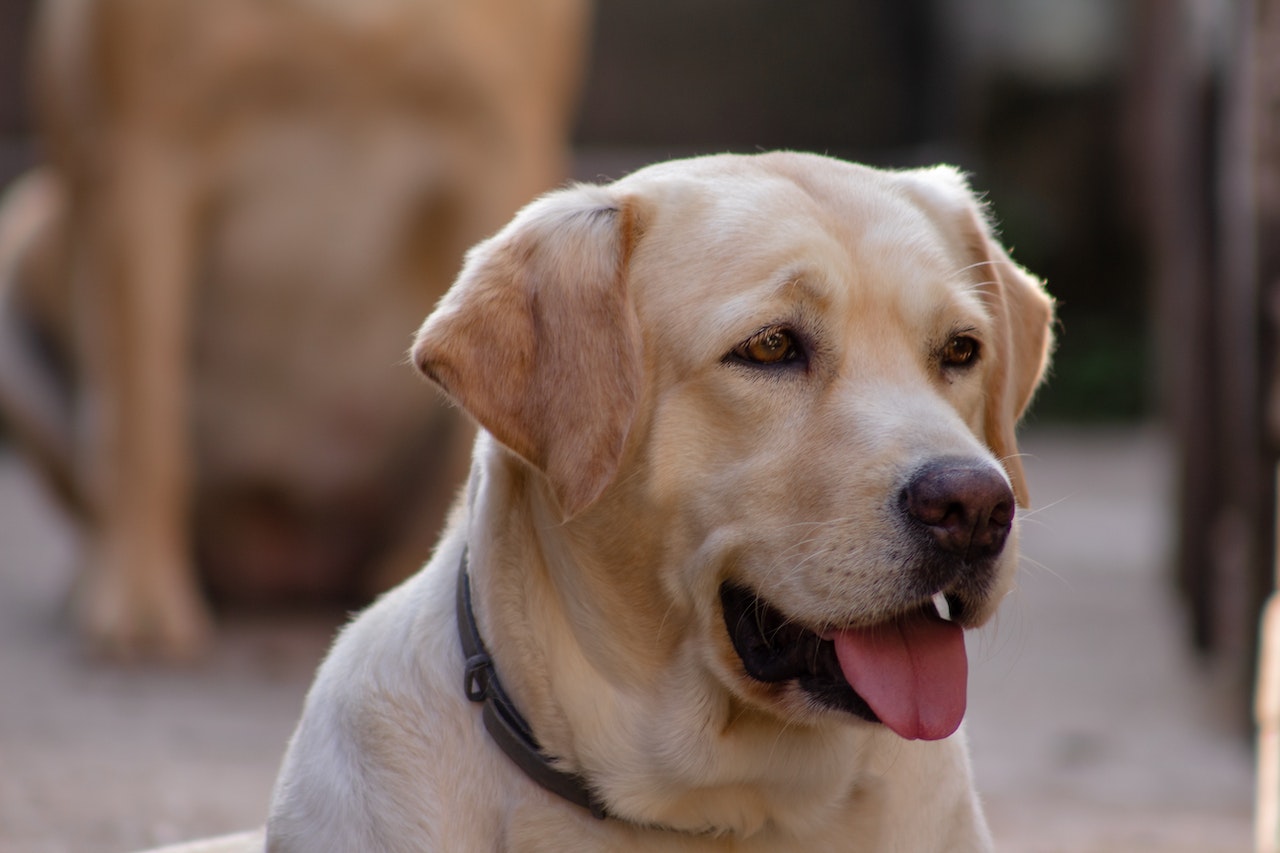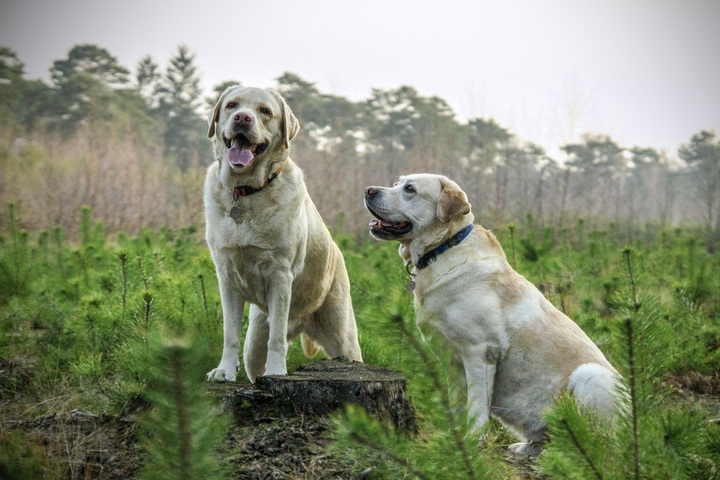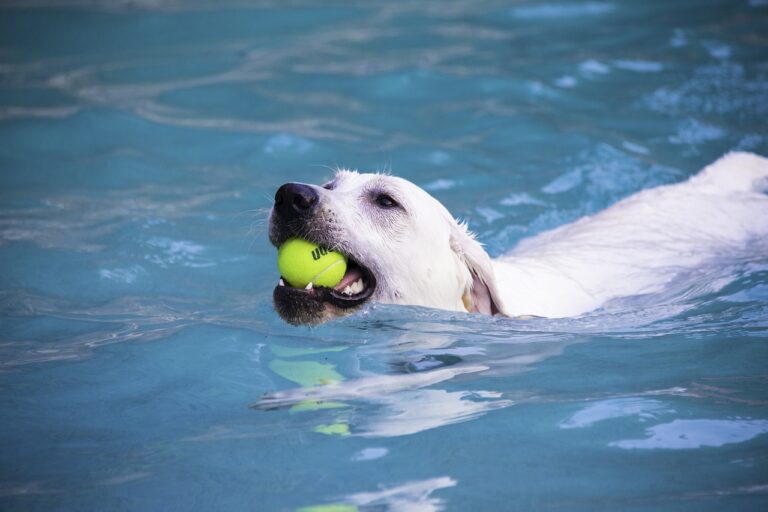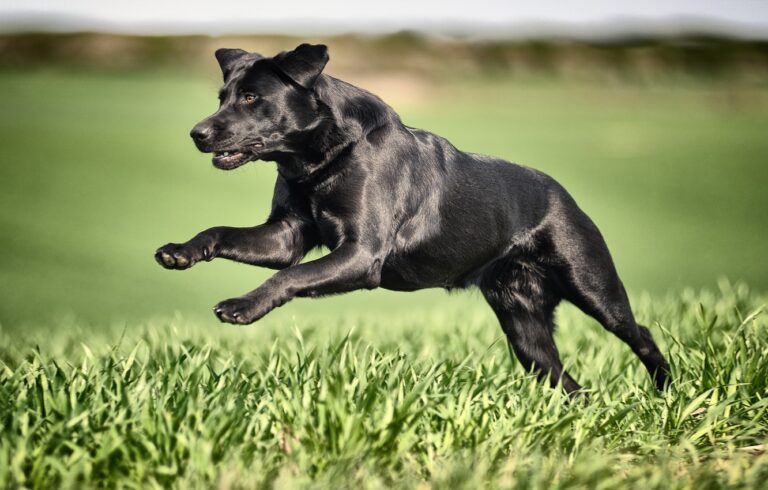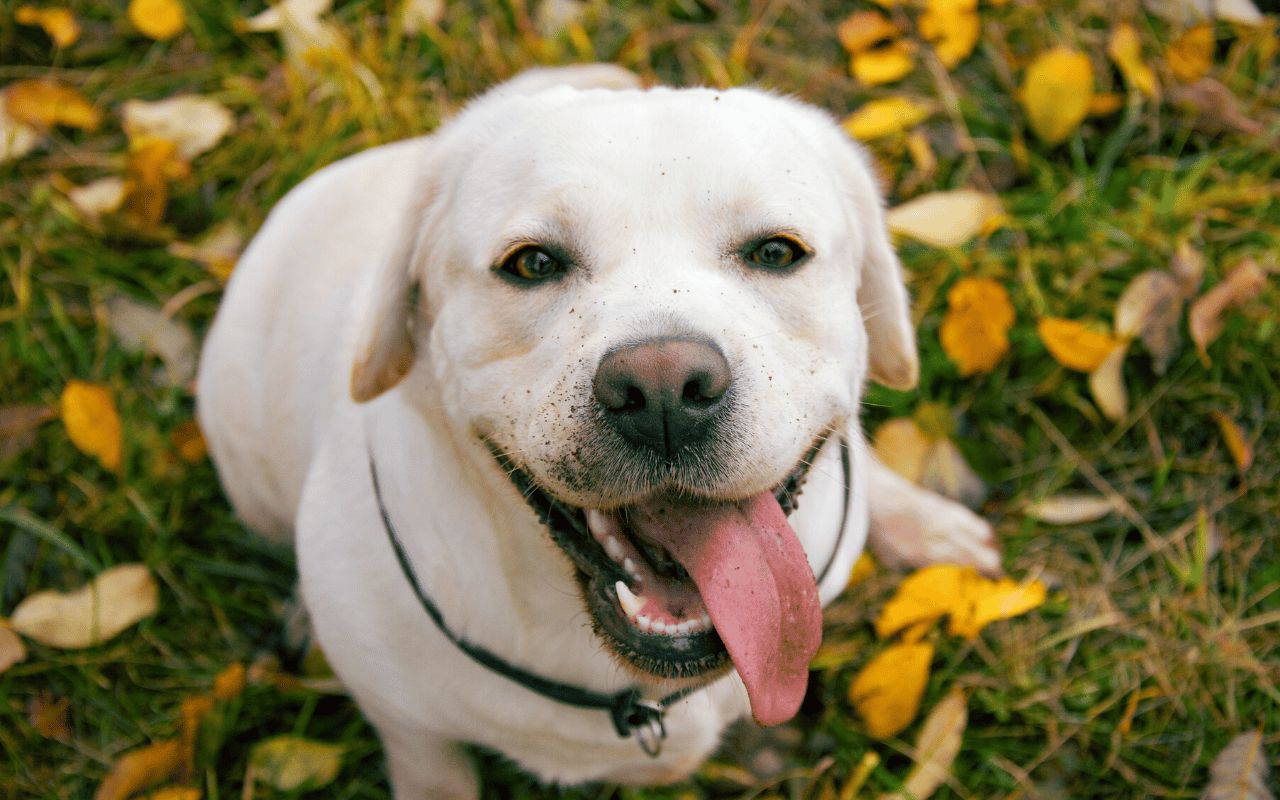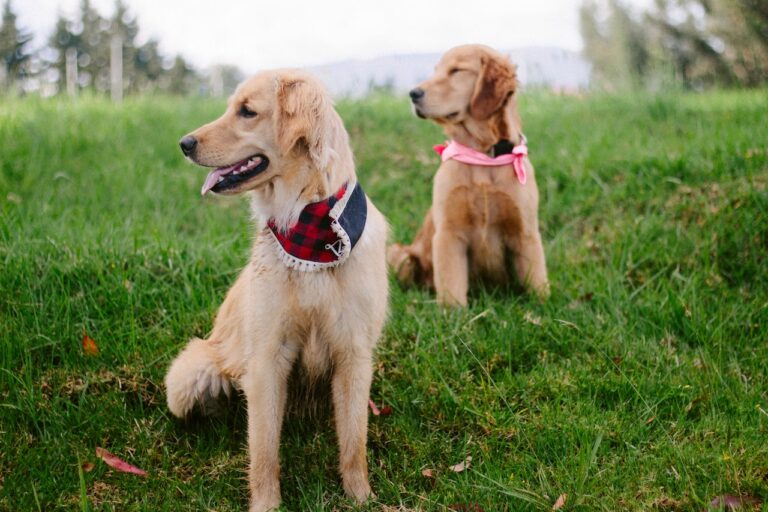What Breeds Make up a Labrador Retriever
Popular dog breeds like the Labrador Retriever are renowned for their loyalty, intelligence, and outgoing personalities. Because of its versatility, trainability, and friendly disposition, this breed has long been a favorite amongst families & dog lovers. Black, yellow, & chocolate are the three hues available for Labradors, but you may wonder what breeds make up this well-known canine.
It is said that many distinct water dog breeds, including the extinct St. John’s Water Dog, were crossed to create the Labrador Retriever breed. With the rare addition of other breeds for certain qualities, today’s breed mostly consists of dogs with British and American ancestry. As a consequence, a special and adored breed emerged that captured the hearts of many dog enthusiasts all over the world. This article will explore the Labrador Retriever’s origins and the breeds that contributed to its development.
The History of Labrador Retrievers
The Labrador breed was initially brought to Britain via ships traveling between Canada & Poole in Dorset in the 1830s. St. John’s water dogs, produced by European settlers of Newfoundland, were first brought to the country. They were later crossed with British hunting canines to produce the Labrador Retriever. The Lord of Malmesbury, the Duke of Buccleuch, & Sir John Scott served as some of its early sponsors.
On the place of Newfoundland, which is located off the northern Atlantic coastline of Canada, the Labrador Retriever breed first appeared. The community’s fishermen have had Labrador retrievers as pals and helpers since the 1700s and originally called St. John’s Dogs, following the capital of Newfoundland. The dogs spent their time working alongside their humans, bringing in lines and recovering fish that had gotten away from hooks. The dogs would return home in the evening to spend time with the Fisher family.
Many people think the St. John’s dog was crossed with the Newfoundland Dog as well as other tiny local water dogs, even though their genetic history is uncertain. Because of the dog’s utility and pleasant temperament, English athletes brought a few Labrador retrievers to their country to use as hunting retrievers. One of the first was the second Earl of Malmesbury, who ordered the shipment of St. John’s hounds to England probably about 1830.
After World War II, the breed’s popularity began to soar, and by 1991, the Labrador Retriever had overtaken all other breeds as the most popular dogs registered with the AKC. They have continued to hold that title ever since. Additionally, they are first in both Canada and England. Today, labs are employed in the detection of drugs and explosives, search and rescue operations, rehabilitation, the support of people with impairments, and as retrievers for hunters.
The Different Types of Labrador Retrievers
Their moniker plays a significant role in their fame. Originally, retrievers were bred to be hunting dogs. They are a specific breed of gun dog employed to recover the animals that hunters have slain. Although their employment as working dogs may have decreased, their appeal as companion animals have risen. This is true of many other sorts of working dogs, like water rescue dogs or other kinds of herding dogs.
Breed standard groups establish breed standards. The British Kennel Club and the American Kennel Club initially set the breed standard for Labrador Retrievers in 1903 and 1917, respectively. The most breed standard bodies do not formally distinguish between the two varieties of Labrador Retrievers, which is a crucial point to notice. Breeders and breed guardians utilize the distinctions more frequently since they are useful.
The division of the Labrador Retriever breed into two primary categories is due to the separation between companion animals and working dogs. There are types of Labrador Retrievers.
🐕American Labrador Retriever
The American Labrador Retriever did not originate in the USA, despite being a highly well-liked dog there. The dogs produced in Britain are the ancestors of all Labrador Retriever varieties. Despite what their names would imply, there is no geographical distinction between American & English Labrador Retrievers. The distinctions depend on whether they are companion animals or working dogs, as was previously stated.
Due to their use as working dogs, American Labrador Retrievers are sometimes frequently called Field Labrador Retrievers. These are the breeds of dogs employed as working dogs in fields and other settings. The American Labrador is more muscular, athletic, and stylish than the English breed. Compared to the English kind, they also have finer & slightly longer extremities. They have a substantially longer noses than the latter, for instance.
Aside from looks, the American Labrador Retriever has a demeanor similar to a working dog. Because they are employed more frequently to do the physically demanding activity necessary for working dogs, they tend to be more active and spirited. They will thus require additional exercise at home. They have a more keen hunting sense since they were raised to be hunting dogs. While this is helpful on the farm, it should be considered when bringing home an American Labrador Retriever.
They must be looked after by a guardian who can appropriately instruct and educate them. The need to transform their innate hunting impulse into positive actions must come first. They can be more prone to attack other animals or even family members if it doesn’t.
🐕English Labrador Retriever
A conformation labrador is another name for English Labrador Retriever. This is because they were primarily bred to show dogs. Although most will be kept as pets, their genetic makeup has focused more on aesthetics than hunting prowess. Since the English-type Labrador Retriever has no working dog, they are not generally as athletic.
The English Labrador Retriever has a larger frame and a slightly stockier build than their American cousin. They are also late-maturing dogs that can develop a fairly thick body and be more prone to obesity. This is especially the case with neutered dogs. They have average-sized cranium, rather wide-set legs, and a small snout.
The English Labrador Retriever has a charming personality. They are loving, lively, and highly friendly. Labrador retriever are perfect household pets. They make very nice pets for kids. Even though they are not working dogs, they still require instruction. They might develop behavioral issues without it, just like any dog. Similar to how the American Labrador Retriever may make a great family pet if we treat them with respect.
🐕Canadian Labrador Retriever
The English and American varieties of Labrador Retrievers were first created in Britain. After that, however, working type & show dogs were developed concurrently in the UK and the US. Because of this, it is not always true to assert that working dogs are exclusively American or vice versa.
However, Canada is also where all Labrador breeds have their roots. When we describe the initial specimen from which these breeds evolved, we refer to the Canadian Labrador Retriever. The current Labrador breed varieties’ popularity led to this breed’s extinction, which has yet to be recognized. It was a breed that initially appeared in the 16th century but had already changed by the time the Labrador Retriever was created.
There are more traits that all Labrador Retrievers breeds have in common than not. For instance, they are equally susceptible to contracting illnesses typical to the Labrador breed.
Labrador Retriever Breed Characteristics
Labradors come in a wide range of variations. Based on the American Kennel Club standard, the following traits are typical of this breed’s American conformation show-bred (bench-bred) lineages. There are significant variations between UK and US standards.
🐶Personality
The Lab has a reputation for being one of the kindest breeds, and this reputation is well-founded. They are friendly to both people and other animals, extroverted, and ready to please. In addition to having a charming attitude, they are intelligent and eager to please, making them simple to teach. Due to their high level of energy and excitement, this breed needs training. The Lab is active since it has a functioning history. For this species to be content, it needs both mental and physical stimulation. Labs have different levels of activity; some are loud, and others are more subdued. The action benefits us all.
🐶Size
The distance from the floor to the withers should equal the distance from the withers to the foundation of the tail. The AKC standard specifies a weight range of 25–36 kilogram (55–80 lb) for dogs and 25–32 kg (55–70 lb) for hens. The AKC has different height requirements for dogs and females, putting the upper limit at 55 to 62 centimeters (21.5 – 24.5 in) for dogs & 55 to 60 centimeters (21.5 – 23.5 in) for bitches.
The FCI quotes a range of 56 to 57 centimeters (22 to 22.5 in) for canines with bitches ideal at 54 to 56 centimeters (21.5 to 22 in), contrary to the Kennel Club’s recommendation that dogs should be 56 to 57 centimeters (22 to 22.5 in) and bitches between 55 and 56 centimeters (21.5 to 22 in).
🐶Coat
The Labrador Retriever should have a short, thick coat that isn’t wiry. The dog does not get cold while entering the water in the winter because of the coat’s water resistance. This indicates that the dog’s coat is naturally oily and slightly dry. Black, yellow, & chocolate are considered acceptable colors.
🐶Temperament
It is well known that Labrador Retrievers have amiable and extroverted personalities. They are often loving, gregarious, and good-natured dogs who like being around people. They are sometimes called “people-oriented” dogs and are devoted to their family. Additionally clever and simple to train labs. They pick things quite quickly and are great at many things, including agility, obedience, and hunting. Hunters favor them because they have a strong innate need to retrieve.
Labradors are often not aggressive toward people or other dogs because of their generous disposition. They often get along well with kids and are wonderful family pets. To guarantee that they behave well among people and other animals, they must be properly socialized and trained, as with all breeds.
🐶Intelligence
The Labrador Retriever breed is renowned for having a high level of intelligence. According to the book “The Intelligence of Dogs,” labs are rapid learners & excel in obedience training, agility, & hunting. They are regarded as the 7th most intellectual dog breed. They are driven by food, play, and praise and want to please their owners. Labs are renowned for their ability to solve problems. They make excellent candidates for working as assistance dogs and in rescue and search since they can figure out how to unlock doors and solve riddles.
Additionally, because of their intelligence, they may be trained for various jobs, including helping people with impairments, helping with search and rescue operations, and participating in canine sports like agility and obedience competitions. It’s crucial to remember that breeds might range in intellect, and various Labs may have distinct strengths and shortcomings. All dogs, particularly Labs, need socialization, proper training, and cerebral stimulation to realize their full potential.
🐶Behavior
Labrador Retrievers are renowned for their extroverted, amiable personalities. Usually friendly dogs, they like being around people as well as other animals. Another characteristic of labs is their high activity level and craving for mental and physical stimulation. Labradors are often not aggressive toward people or other dogs because of their pleasant disposition. To guarantee that they behave well among people and other animals, they must be properly socialized and trained, as with all breeds.
Labs highly desire to retrieve things, such as pursuing and retrieving objects. This sense may also be honed and improved through training for pursuits like hunting and field tests. Because of their great intellect and desire to please their owners, labs are typically simple to teach. They are frequently used as service animals, doing tasks including rescue and search operations, therapy, and helping people with impairments.
Proper Care of Labrador Retriever
Popular dog breeds like Labrador Retrievers are renowned for having outgoing, energetic attitudes. For them to remain healthy and content, proper care is necessary. Here is some advice on how to take care of a Labrador Retriever:
☑️Feeding
Due to their activity level, Labrador Retrievers need a balanced diet rich in high-quality protein. Give your dog food suitable for their age, weight, & degree of exercise. Make sure your dog always has access to clean water to drink.
☑️Exercise
Due to their energy, Labrador Retrievers require a lot of exercises. They must engage in daily activities for at least 30 to 60 minutes, such as walking, running, or playing. By keeping them active, you can keep them healthy and stop harmful behavior.
☑️Grooming
The short, thick coat of Labrador Retrievers loses all year round moderately. To keep their coat free of stray hair, brush them frequently. Only wash them when essential. To maintain proper hygiene, you should also brush their teeth, trim their nails, & clean their ears.
☑️Training
Because of their intelligence and desire to please, Labrador Retrievers are simple to teach. Start your dog’s obedience training initially to teach him fundamental cues like stay, sit, and come. Additionally, socialize the dog to help them gain confidence and a sense of well-being among people and other dogs.
☑️Health
Although Labrador Retrievers are mostly healthy dogs, they might be vulnerable to obesity and hip dysplasia. Your dog can stay healthy with regular veterinary checks and preventative treatment, including immunizations, flea & tick control, & heartworm prevention.
Living With Labrador Retriever
Labradors have a variety of lovable characteristics, or else they wouldn’t be so well-liked. The fact that they want to work with people contributes to their intelligence and relative ease of training. They are “easy keepers” and risk gaining weight if not given the proper amount of activity and food quantities. Due to their want to be around people and the fact that many do not fare well in kennels, labs make wonderful family dogs.
Labradors do tend to guard their family and homes, but they also like meeting new people. Due to their great need to retrieve objects, they may develop into destructive chewers if the proper toys and training are not provided. The easiest way to stop a lab from “mouthing” someone is to give them a toy to carry about, filling their lips with toys already. Due to their strength, these dogs require early training in order to develop good lead manners.
This breed earns high marks for shedders thanks to the excellent double coat that makes the Labrador warm when retrieving in freezing water. Short weekly grooming is usually sufficient for their coats, but daily grooming is required during shedding season. The activity levels required by the various lines vary; field line canines can run continuously while showing line dogs need modest exercise.
Labrador Retriever Breed Highlights
👉If given too much food, Labrador Retrievers will quickly put on weight. Limit treats, make sure your Lab gets lots of activity, and portion out regular meals rather than always putting food out. Also, be aware that the Lab has a voracious appetite that even includes inedible objects and people’s food. Labradors may manufacture a portion of food out of chewed-up objects like children’s toys and will scavenge in rubbish and on countertops.
👉Labrador Retrievers have a high energy level since they were bred to perform in physically demanding vocations. They must exercise daily for at least 30 to 60 minutes. Without it, they may express their bottled-up rage by barking and gnawing, among other harmful behaviors.
👉Many individuals believe that they do not need to bother with training because laboratories have such a positive image. However, Labs are big, active creatures, and just like other dogs, they must be taught how to behave. As soon as you take your Lab home, register for puppy & obedience lessons.
👉The stereotype of Labs being an energetic breed is common. Although most lab puppies quiet down a little as they age, they are very active. Nevertheless, they often live rather busy lives.
👉Although Labrador Retrievers are not often considered to be escape artists, they will run away given the correct incentive, such as the smell of something delicious. Make sure your Labrador has a microchip and up-to-date identifying tags.
The Significance of Labrador Retriever
The success rate of Labrador Retrievers as guide dogs have been demonstrated to be quite high. Recent research examined the effectiveness of guide dog training in four distinct breeds: German Shepherds, Labrador Retrievers, and Labrador/Golden Retriever Mixes. German Shepherds stood the best likelihood of failing this trial. The breeds with the best success rates were Labrador Retrievers & Golden Retriever Mixes.
However, the success rate of German Shepherds & Golden Retrievers was higher after prolonged training than that of Labrador Retrievers. The Labrador can swim well. They are great upland game-hunting companions and may be utilized for pointing and flushing.
Labradors are known for their high level of intellect, initiative, and self-direction, as is demonstrated by working dogs like Endal, who was taught to, in an emergency, place his wheelchair-using human in the recovery position, wrap him in a blanket, and dial an emergency phone. With prior training, many Labradors were also taught to help their owners withdraw credit cards and cash from ATMs.
The breed is employed in lifesaving and water rescue. The Italian School of Canine Lifeguard and Leonberger, Newfoundland, and Golden Retriever dogs still employ it in that capacity. As battle dogs, labradors have been employed. They served as scout dogs in the Vietnam War, searching for fallen or injured combatants or enemy locations.
Labrador Retriever Health Issues
Although Labrador Retrievers are typically in good health, they are susceptible to health issues like all breeds. Not every Lab will contract one or more of these illnesses, but if you’re considering getting one, you should be aware of them.
🔬Infections
The same bacterial and viral illnesses that may affect any dog, including parvo, rabies, and distemper, can also affect Labrador Retrievers. Given her age, the illnesses we find in our region, and other considerations, we will advise immunization as a way to avoid many of these infections.
🔬Dental Illness
When a dog is two years old, dental disease is pets’ most prevalent chronic condition. Sadly, your Labrador retriever is more prone than other dogs to experience dental issues. Tartar buildup on the teeth is the first sign of dental illness, advancing to gum and tooth root infection. Your friend might lose her teeth and risk harm to her liver, kidneys, heart, & joints if we don’t treat or prevent dental disease.
Your Lab’s lifespan might be shortened by one to three years! We’ll provide your dog with frequent dental cleanings and advise you on how to maintain your pet’s healthy teeth at home.
🔬Obesity
An important health issue for Labrador Retrievers might be obesity. It is a risky condition that can worsen joint problems, back pain, metabolic & digestive disorders, and heart disease. When your friend looks at you with those soulful eyes, it might be enticing to offer her food, but you can “love her to death” with leftover human food and dog treats. Give her a hug instead, clean her hair or teeth, play games with her, or go on a stroll with her. Both you and she will feel better!
🔬Bloat
Bloat, also known as gastric dilatation-volvulus (GDV) or bloat, typically affects dogs with deep, small chests. Therefore, compared to other breeds, your Labrador is more vulnerable. As a dog bloats, its stomach twists and expands with gas. The twisting cuts off the blood supply to the stomach & possibly the spleen. If neglected, the illness can swiftly lead to death—sometimes in as little as 30 minutes.
Your dog may heave or retch, appear restless, possess an enlarged belly, or lie in the attitude of prayer (front foot down, back end up). The stomach can be prevented from twisting with preventative surgery in which it is nailed or sutured into place. Take your pet right away to an emergency hospital if you notice any signs!
🔬Hip Dysplasia
A heritable disorder known as hip dysplasia causes the thighbone to not fit tightly into the hip joint. Some dogs exhibit pain and lameness in one or both of their hind legs, but a dog with hip dysplasia may not exhibit any indications of discomfort. Arthritis may appear as the dog aged. The University of Pennsylvania Hip Improvement Program and the Orthopedic Foundation for Animals provide X-ray screening for hip dysplasia. Hip dysplasia in dogs should prevent breeding.
🔬Elbow Dysplasia
It is a heritable disorder that affects large-breed dogs often. Due to the three different development rates of the three bones that make up the Labrador’s elbow, there is joint laxity. This might lead to painful lameness. Your veterinarian can advise surgery to fix the issue or painkillers to lessen the discomfort.
🔬Cataracts
Canine cataracts are defined by foggy areas on the eye lens that may enlarge with time, much like in humans. They can appear at any age and, while occasionally leading to serious vision loss, they frequently do not affect vision. Breeding dogs must have a board-certified veterinary ophthalmologist’s examination to be declared clear of inherited eye disease before mating. Typically, cataracts may be successfully removed surgically.
Frequently Asked Questions
What characteristics are inherited by Labradors?
The ‘eee’ & ‘bee’ genes are combined in every newborn Labrador. Nine distinct combinations are available. There are nine potential genotypes for Labradors! They are included in the table below (a dog’s phenotype is its outward look, while its genotype is its genetic composition).
Labrador or Golden Retrievers, who is smarter?
Both Labradors and Golden Retrievers are quite intelligent, but Golden Retrievers come out on top when it comes to intelligence. Golden retrievers are the 4th most intellectual breed, whereas Labradors are ranked seventh in Dr. Stanley Coren’s evaluation of dog intelligence.
Which two Labrador breeds are there?
The American Labrador is tall and lanky, whilst the English Labrador is short and stocky. All three color variations—black, blonde, and brown—are prevalent in both people with American and English ancestry.
What distinguishes a Labrador Retriever from a pure Labrador?
The distinction between a Labrador and a Labrador retriever is largely academic. The same dog breed, officially called the Labrador retriever, is referred to by both titles. The convenient and short name “Labrador” is frequently used to refer to Labrador retrievers. Labrador retrievers were used as gun dogs in the past.
What breed of Labrador is rare?
Of the three basic Labrador hues, chocolate Labrador is the least common. These dogs can only be produced via the EEbb and Eebb genes. Similar to yellow Labrador, chocolate labs have a wide range of coat colors.
Final Thoughts
The loving, devoted, smart Labrador Retriever dog breed is incredibly well-liked and well-known. A large head, friendly eyes, a short, thick coat that comes in various colors, and a powerful, muscular physique are all distinguishing physical traits of this breed. Anybody searching for a devoted, wise, and adaptable pet should consider getting a Labrador Retriever. They are wonderful pets and are guaranteed to offer happiness and affection to whatever family they become a part of because of their amiable and outgoing character. Do you want to know what is the difference between a golden retriever and a Labrador retriever? Click Here!

